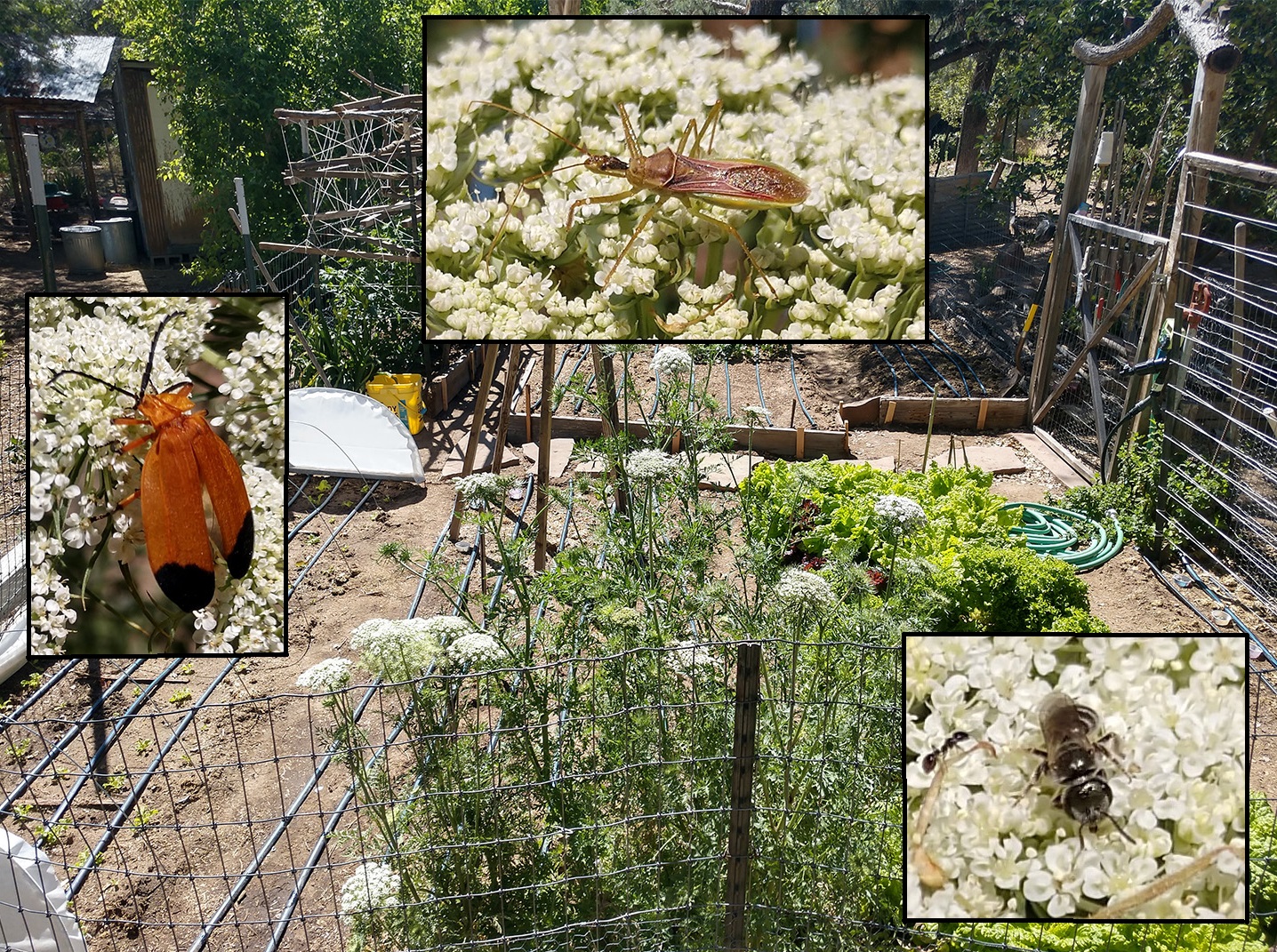 Finding Peace Through Gardening - June 24, 2020 Jeff Schalau, Agent, Agriculture & Natural Resources University of Arizona Cooperative Extension, Yavapai County I don’t think of myself as an extremely touchy/feely person, but as I’ve navigated my new work environment with the onset of COVID-19 by practicing social distancing, working from home, reduced travel, etc., I’ve noticed something. When I’m done with my virtual meetings and email correspondence, I go outside to my vegetable garden, take some deep breaths, and just start looking around and listening. I see insects, not usually pests, but pollinators and predators. I see lizards and snakes foraging among the crops. I see and hear birds in the nearby trees and in the garden. After a few minutes, I am recharged and feel more relaxed and peaceful. I also see (and taste) the fresh, healthy food that my wife and I grow to enrich our bodies and minds. It’s not always a picnic. I also see weeds, pocket gophers, wood rats, and insect pests that want to participate. The garden also provides food, water, and shelter to a range these less desirable inhabitants. The garden requires some management and inputs of energy – weeding, fencing, irrigation, soil amendments, etc. I look at these aspects of gardening as “problem solving” or “character building”. However, I have been known to celebrate after successfully trapping particularly problematic pocket gophers. The notion of finding peace and fulfillment through gardening has been proven with research. Horticultural therapy has been practiced in healthcare for over 50 years. More recently, the Japanese have instituted a practice called “forest bathing”. While it can take many forms, forest bathing involves immersing oneself in a forested or natural environment where all five senses receive input from the surrounding environment and the result is a soothing. Forest bathing has been proven through research to have beneficial impacts on human health. Upon reflection, I suppose I have been experiencing the benefits of forest bathing in my vegetable garden and yard. Don’t worry, I have most of my clothes on when I participate in the therapeutic practice of “garden bathing”. If you are not so inclined, wear a hat and sunscreen at a minimum. In the morning when I go our vegetable garden, I often see garter snakes – I suspect it is the terrestrial garter snake. Garter snakes have been common visitors to our garden for several years. I know they feed on snails and slugs. Plateau whiptail lizards are also common visitors to the garden. I see them digging and eating insects in between planted areas. We also have lots of plateau fence lizards in the yard, but they don’t seem to hang out as much in the vegetable garden. Birds also visit the vegetable garden. In years past, American Robins would sit next to me and wait for a worm or grub to be uncovered. Of late, a gray, medium-sized bird with a very short crest has been hanging out with me in the garden – it might be a juniper titmouse. Hummingbirds also frequent our yard and garden adding interest and activity. I don’t feed them, but they thrive in the riparian habitat as Miller Creek passes through our property in Prescott. This year, I allowed a few of last summer’s carrots to flower and go to seed (carrots are biennials). Lately, one of my favorite pastimes is to watch the insect life that visits these flowers each day. I have also been taking photos of some of these insects (see photo below). The tiny insects have also challenged my photography skills and insect identification skills. This practice is called Farmscaping which I wrote about in my April 29, 2020 Backyard Gardener. Since COVID-19 has limited my work activity, I have started to share photos of my garden and practices on the Yavapai County Master Gardener Facebook Page (https://www.facebook.com/yavapaicountymastergardeners/). If you grow vegetables, fruit, flowers, or native plants, you may enjoy following and liking us. I also post links to the weekly installments of the Backyard Gardener there. I guess it’s time to visit the garden again and then check my email or attend the next Zoom meeting. Happy Gardening! You can follow the Backyard Gardener on Twitter – use the link on the BYG website. If you have other gardening questions, email the Master Gardener Help Desk in Prescott (prescottmg@gmail.com) or Camp Verde (verdevalleymg@gmail.com) and be sure to include your name, location, and phone number. Find past Backyard Gardener columns or provide feedback at the Backyard Gardener web site: https://cals.arizona.edu/yavapai/anr/hort/byg/.  Diverse insects are attracted to carrot flowers. The background shows the overall garden with several flowering carrot plants in the foreground. Inset photos were taken of various insects visiting carrot flowers: a net-winged beetle (left); assassin bug (upper); and a tiny (3/8” in length) solitary bee foraging for pollen (photos by Jeff Schalau, University of Arizona Cooperative Extension).
Diverse insects are attracted to carrot flowers. The background shows the overall garden with several flowering carrot plants in the foreground. Inset photos were taken of various insects visiting carrot flowers: a net-winged beetle (left); assassin bug (upper); and a tiny (3/8” in length) solitary bee foraging for pollen (photos by Jeff Schalau, University of Arizona Cooperative Extension).Additional Resources Forest Bathing – Connecting to Nature to Improve Health, University of Arizona Cooperative Extension extension.arizona.edu/sites/extension.arizona.edu/files/pubs/az1805-2019.pdf Theraputic Horticlture, Penn State University Extension extension.psu.edu/programs/master-gardener/counties/cumberland/horticulture-therapy Reptiles and Amphibians of Arizona www.reptilesofaz.org/index.html |